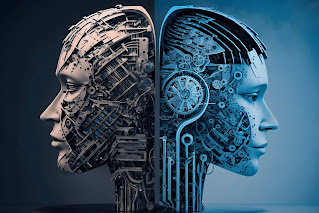The Convergence of Security and Artificial Intelligence
In recent years, artificial intelligence (AI) has become integral to cybersecurity defense. As cyber threats have become more frequent and sophisticated, AI and machine learning have stepped in to improve threat detection, analysis, and responsiveness. This joining of AI capabilities with security needs has given rise to a new field known as cybersecurity AI.
Cybersecurity AI refers to the application of AI algorithms and techniques to automate and enhance cybersecurity operations. It involves using machine learning to extract insights from massive datasets that can reveal attack patterns and vulnerabilities. Cybersecurity AI enables security teams to identify threats and respond to incidents at machine speed.
Key drivers propelling the adoption of AI in cybersecurity include:
- The volume and complexity of cyberattacks continues to increase exponentially, making AI a necessity to keep pace. AI systems can rapidly process huge amounts of data beyond human capabilities.
- A worldwide shortage of skilled cybersecurity professionals has made leveraging AI critical to augment existing teams. AI automates tasks allowing staff to focus on higher value activities.
- Legacy cybersecurity tools relying on rules and signatures are unable to detect novel threats. The adaptive intelligence of AI systems enables responding to new types of attacks.
- Major developments highlighting the growth of cybersecurity AI include:
- Proliferation of AI-powered security products such as user behavior analytics, next-gen antivirus, botnet detection, and more. Venture funding for security AI startups has also surged.
- Large investments in cybersecurity AI research and acquisitions by major tech firms like Microsoft, Amazon, IBM, and Google. Partnerships with universities are also rising.
- Estimates project the global market for cybersecurity AI will experience massive gains, reaching revenues of $46 billion by 2027.
- Adversarial attacks to trick AI systems into misclassifications that can bypass defenses. Adversarial machine learning is an emerging field to counter this.
- Potential biases in algorithms that could lead to inaccurate conclusions and security failures. Ensuring high quality, diverse training data is critical.
The melding of artificial intelligence capabilities with cybersecurity needs offers tremendous potential to enhance threat prevention and defense. But it also introduces new challenges and vulnerabilities which the industry must actively identify and address. With the proper governance and safeguards, AI can become an invaluable ally in the fight against cybercrime.
Some examples of AI-powered security products that utilize machine learning and other AI capabilities:
- Anti-malware solutions - Next-gen antivirus products like CrowdStrike and Cylance use AI to identify new malware samples and detect zero-day threats based on suspicious behaviors.
- Fraud detection - Companies like PayPal and Visa apply AI to spot fraudulent transactions by analyzing user patterns and activities.
- Network security - AI-enabled firewalls like SentinelOne can automatically detect anomalies and block suspicious traffic and cyberattacks in real-time.
- Cloud security - Cloud security platforms from AWS, Microsoft Azure, and Google Cloud use AI algorithms to monitor workloads and user activities to detect compromises.
- Email security - Solutions like Abnormal Security and Vade Secure filter out phishing scams and spam using AI techniques like natural language processing.
- Endpoint security - Tools like Blackberry Cylance protect devices by relying on AI to analyze and block threats and malware.
- Security analytics - Vendors like Splunk and Gurucul leverage machine learning to analyze event data, identify threats, and detect insider risks.
- Identity and access management - Companies like Ping, ForgeRock, and Okta utilize AI for adaptive authentication and detecting account takeover attempts.
- Security robots - Startups like Darktrace and SparkCognition have developed AI-powered security bots that replicate incident response analysts.
The integration of AI is rapidly redefining the capabilities of cybersecurity products across the board to enhance threat detection, prevention, investigation and response.
Labels: ai, artificial intelligence, convergence, Cybersecurity, jorge sebastiao

























0 Comments:
Post a Comment
<< Home